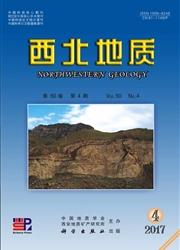

 中文摘要:
中文摘要:
笔者对德国几个在产钾盐矿山实地考,察以及与德国钾盐研究机构的技术交流,并结合大量文献资料,对德国钾盐地质条件、开发现状以及开采技术的发展进行综述,为国内找钾和钾盐的综合开发利用提供借鉴。德国钾盐产于上二叠纪蔡希斯坦盆地(Zechstein Basin),位于相对稳定的陆块浅海陆架区,主要通过浅陆棚阶段和次深陆棚阶段形成。蔡希斯坦盆地已识别出8个盐沉积旋回(Z1-Z8),每个旋回的沉积方式大致相同,沉积层序自下而上通常为:碎屑岩→碳酸盐→硬石膏→岩盐→钾盐层→硬石膏顶板。德国二叠纪超大型钾盐盆地的发现,表明海相沉积盆地是地球的可溶性钾盐主要储存库,印证了海相钾盐常形成于次盆地中。同时,通过对钾盐层顶底板和钾盐样品的化学分析,研究特定元素(Br、Rb)的变化,作为国内找钾的指标。钾盐的开采主要分为旱采法和水采法2种,传统上以旱采法为主,但随着技术的进步,水采法相对旱采法有诸多优势。
 英文摘要:
英文摘要:
The paper is written based on the basis of the author's' substantive experience on potash exploration and exploitation overseas,personal visits at operating potash mines in Germany,face-to-face communication with German potash institutes and abundant historic data.It is with an overview for on geologic setting,current status of exploitation and mining technologies of German potash.Meanwhile,it this paper aims at providing a reference for domestic potash exploration and as well as its integrated exploitation through the research in geological setting,history of formation and mining technologies of Germany martial-face potash.German potash was formed in Zechstein Basin in Permian period,which was situated relativelysteadily in shallow continental shelf area of continental block.Eight cycles have been found in Zechstain Basin(Z1-Z8)and each cycle was deposited in similar sequence.The sequence of deposit from bottom to top is:clastic rock→carbonate→anhydrite→halite→sylvite→roof of anhydrite.The discovery of super large-scale Permian potash basin displays that most potash resource in the world,which is normally contained in sub-basin,comes from martial-face.Meanwhile,the change of some specific elements,such as bromine and rubidium,could be indication of potash deposit.The method should be used in the potash exploration in China.Potash could be mined by either conventional mining or solution mining.Conventional mining was more popular in past many years.However,solution mining has been improving and it has more advantages compared with conventional mining.
 同期刊论文项目
同期刊论文项目
 同项目期刊论文
同项目期刊论文
 期刊信息
期刊信息
